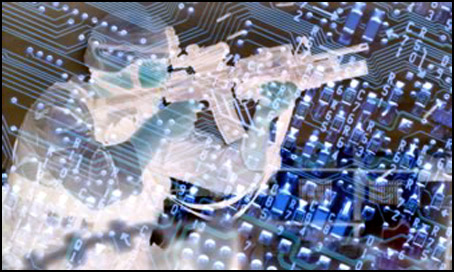
From Eric Schmitt and Thom Shanker, the New York Times: Just before the American-led strikes against Libya in March, the Obama administration intensely debated whether to open the mission with a new kind of warfare: a cyberoffensive to disrupt and even disable the Qaddafi government’s air-defense system, which threatened allied warplanes.
While the exact techniques under consideration remain classified, the goal would have been to break through the firewalls of the Libyan government’s computer networks to sever military communications links and prevent the early-warning radars from gathering information and relaying it to missile batteries aiming at NATO warplanes.
But administration officials and even some military officers balked, citing the precedent it might set for other nations, in particular Russia or China, to carry out cyberraids of their own, and questioning whether the attack could be mounted on such short notice. They were also unable to resolve whether the president had the power to proceed with such an attack without informing Congress.
In the end, American officials rejected the cyberattacks and used conventional aircraft, cruise missiles and drones to strike the Libyan air-defense missiles and radars used in Col.Muammar el-Qaddafi’s government.
This previously undisclosed debate among a small circle of advisers demonstrates that cyberweapons are a growing form of warfare. The question facing the United States is whether and when to cross the threshold into overt cyberattacks. . . .
That reluctance peaked during planning for the opening salvos of the Libya mission, and it was repeated on a smaller scale several weeks later, when military planners suggested a far narrower computer-network attack to prevent Pakistani radars from spotting helicopters carrying Navy Seal commandos on the raid that killed Osama bin Laden on May 2.
Again, the decision was no. Instead, specially modified, radar-evading Black Hawk helicopters ferried the strike team, and a still-secret stealthy surveillance drone was deployed. (graphic: Defense Tech)
Image: cyber_warfare.jpg
